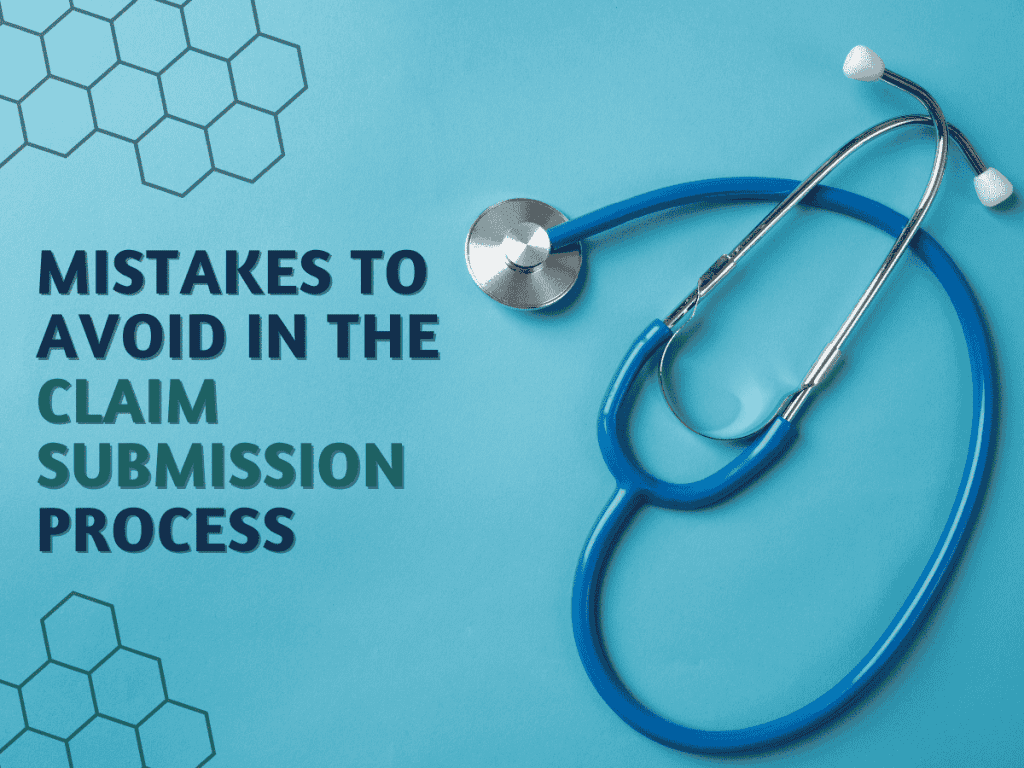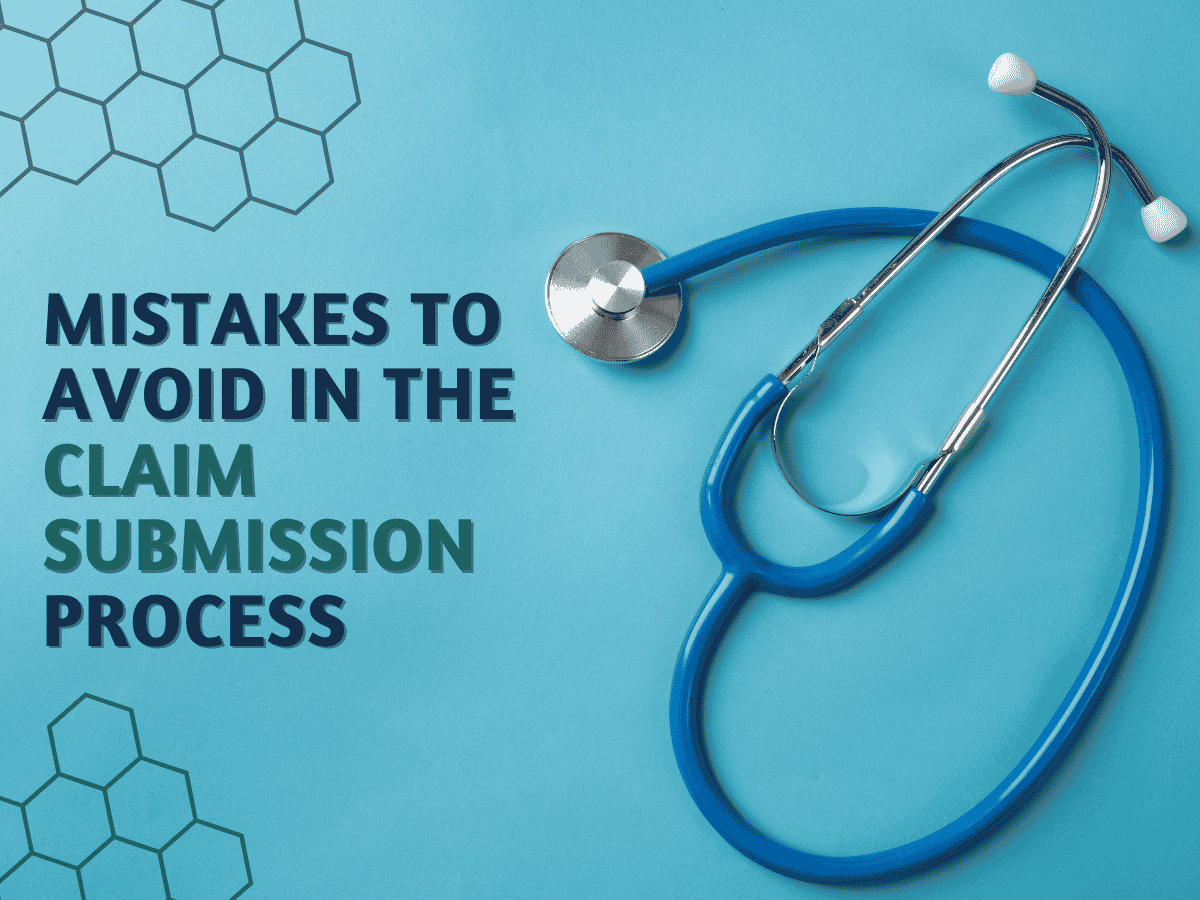Crucial Mistakes to Avoid in the Claim Submission Process
The process of submitting claims is crucial in medical billing, as even minor errors can lead to significant financial losses. A single mistake in patient information, some coding inconsistencies, or failure to check insurance coverage could result in claim denials or rejections, delaying payment and interrupting the revenue cycle. Accurate and timely claim filing is essential for any healthcare provider trying to achieve financial stability and reduce administrative costs.
 These claim submission errors have a snowball effect, raising staffing costs for resubmission and adjustments while also significantly increasing reimbursement time. Such delays have the double disadvantage of affecting cash flow and taxing already overburdened staff dealing with complex billing tasks. In some cases, persistent mistakes may result in audits, which can further harm a practice’s financial health and reputation. With strict regulations and various standards set by different payers, every detail becomes critical in the claim filing process.
These claim submission errors have a snowball effect, raising staffing costs for resubmission and adjustments while also significantly increasing reimbursement time. Such delays have the double disadvantage of affecting cash flow and taxing already overburdened staff dealing with complex billing tasks. In some cases, persistent mistakes may result in audits, which can further harm a practice’s financial health and reputation. With strict regulations and various standards set by different payers, every detail becomes critical in the claim filing process.
Understanding the most common mistakes made while submitting claims, as well as ways for avoiding those errors, will save your revenue streams from being interrupted unnecessarily. Throughout the rest of this article, we’ll look at some common mistakes and provide practical solutions for smoothing down your claim submission process, allowing your practice to avoid denials, reduce payment delays, and keep operations operating smoothly.
Here are the most common mistakes in claim submission
1. Inaccurate Patient Information
Incorrect patient information is among the most common and simple errors that can occur during any type of claim submission. It ranges from misspelling a name and entering the wrong birth date to providing an invalid insurance policy number. Even slight differences can result in claim denial or rejection.
How to Avoid This Mistake:
Ensure that patient information is checked and rechecked at each stage of the care process. At intake, double-check all information with the patient and the insurance provider. If your hospital uses Electronic Health Records (EHR) software, create validations to automatically indicate errors so that they can be reviewed before submitting claims.
2. Incorrect Insurance Information
Another frequent error involves filing claims with the wrong insurance company or with incorrect insurance information. A claim submitted to a plan to which the patient is no longer enrolled or one having different coverage information than what is on file will result in delayed payment.
How to Avoid This Mistake:
Always confirm the insurance coverage details with the patient on each visit, as this information changes frequently. If one is given access to real-time insurance verification, make sure to do so in order to assure the accuracy of data prior to starting the claim submission process. This extra step saves time and prevents unnecessary rework in claims.
3. Failure to Verify Patient Eligibility
Submitting claims for services for which a patient is eligible will almost always result in a denied claim. Such errors are common when healthcare professionals fail to check patients’ eligibility for coverage benefits on the exact date of service.
How to Avoid This Mistake:
Patient eligibility verification should be done before the appointment. You can contact the insurance provider directly or utilize an online verification tool. Always confirm the co-pays, deductibles, and whether the required service is covered by the patient’s plan.
4. Coding Errors
Coding errors are in the higher rankings among the sources of claim denials. It could be anything—from using incorrect diagnosis codes (ICD-10), procedure codes (CPT), or modifiers. All such mistakes tend to slow down your reimbursement process considerably. Even a minor mistake in the selection of an incorrect code for the proper procedure performed may result in a denied claim.
How to Avoid This Mistake:
Invest in recurrent training for staff coders. Inform them of changes to medical coding guidelines, such as the fact that ICD-10 and CPT codes are updated once a year. Ensure that your clinic uses coding tools and software that can provide you with automatic code suggestions based on patient data, but always double-check the codes before submitting your final claim.
5. Missing or Insufficient Documentation
Incomplete or missing documentation is another major cause of claim denials. Every claim needs to be supported by proper medical documentation that justifies the services provided. If this documentation is lacking or doesn’t support the billed service, the claim will likely be rejected.
How to Avoid This Mistake:
Create a system that ensures the compilation and attachment of all required documents prior to the filing of a claim. If an insurance company wants further information or documentation, react promptly and in detail. Use a checklist of required documents to ensure that no essential documents are overlooked while submitting.
6. Failure to Meet submission Deadlines
Every insurance carrier has deadlines for claim submissions, and failure to meet them may result in the claim being automatically denied, and the provider will be unable to appeal for reimbursement later. Most healthcare practitioners have difficulty keeping track of different submission deadlines for a number of payers.
How to Avoid This Mistake:
Maintain a master calendar of claim submission deadlines for all insurance companies with which you will be working. Use automatic billing software to track deadlines and send reminders as they approach. To ensure timely submissions, you must implement an internal process that prioritizes claims that are approaching their filing restrictions.
7. Incorrect Use of Modifiers
Other important elements in medical billing are modifiers, which indicate that some service or procedure has been modified in one way or another without changing its definition or code. Their misuse or omission can cause confusion and result in claims being rejected or denied. The incorrect use of a modifier might imply something was separate and independent when it wasn’t.
How to Avoid This Mistake:
Train your staff on the proper application of modifiers, including when to apply them in a given circumstance or condition. Secondly, invest in software that has an integrated modifier validation system to avoid improper applications.
8. Duplicate Claims
Another well-known problem is duplicate claim submissions, either intentionally or by accident, which creates problems with the insurance payers. An example of this includes health providers who send another claim in because they have not heard back yet, at which time this often leads to denial and just creates a mess.
How to Avoid This Mistake:
Before resubmitting any claims, follow up with the insurance payer to check the status. Most billing software also has some type of tracking for claim submissions that you can refer to in order to avoid submitting the same claim more than once.
9. Under- or Over-Coding
Claim denials may occur as a result of both under-coding (billing for less expensive services than performed) and over-coding. Of course, either could result in an audit. Under-coding just leaves money on the table, but over-coding is fraud.
How to Avoid This Mistake:
Ensure that your coding staff is properly educated and follows the coding procedures correctly. Ongoing audits and evaluations of submitted claims will help identify trends in under- or over-coding, allowing fixes to be made before the problems increase.
10. Lack of a Clear Denial Management Process
Even with all precautions in place, denials occur. However, without an efficient denial management process, what would have been a short-term problem becomes long-lasting. In the absence of timely follow-up and resubmission of the corrected claims, practices forfeit revenue that they desperately need.
How to Avoid This Mistake:
Denial management should include clear processes for identifying the reason for denial, correcting the error, and resubmitting the claim in the shortest possible time. It is also very important that staff are devoted to denials, and they are properly equipped with the tools and knowledge to effectively work with insurance providers.
Conclusion
The claim submission process can be loaded with risks, but with careful attention to detail, skilled and regular staff training, and solid internal procedures, such frequent errors can be avoided. Precise and timely claim submission is critical to the smoothness of the revenue cycle for any healthcare provider. Avoiding these common mistakes will help your practice achieve maximum reimbursement, low claim denial rates, and sound financials.
This investment in technology, staff education, and workflow improvements can result in accurate claim submissions the first time. By implementing these best practices, healthcare providers will be able to streamline the claim submission process, increase their bottom line, and reduce the burden of monitoring those claims.


